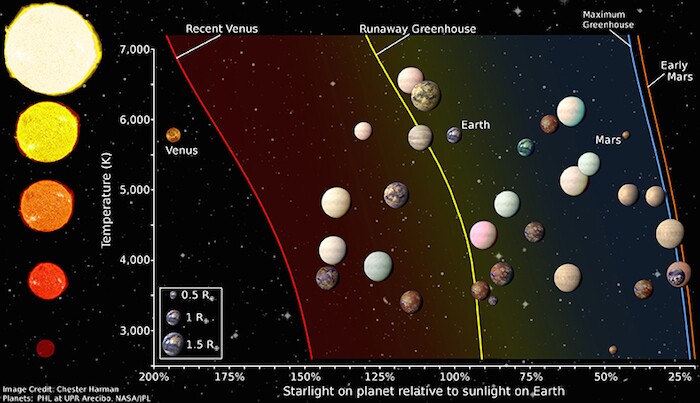Since its launch in 2009, the Kepler space telescope has scoured the sky in search of planets beyond our solar system, and in particular, those which orbit their stars within the habitable zone. In that time, a haul of over 4,000 exoplanet candidates has been catalogued, including 216 in that range that holds the potential for life. Now, researchers have analyzed data gathered by the Kepler mission and narrowed the list down to the 20 best candidates for habitable Earth-like planets that may warrant closer study.
The habitable zone is the area around a star where conditions are just right for life to take hold due to the potential for liquid water to be found on the surface of a planet. Although there's every chance that life could arise in conditions that may be inhospitable to us, focusing the search on planets orbiting within this zone is a good place to start.
Scientists can't agree on exactly where our own solar system's habitable zone starts and stops, let alone be sure about those of other systems, especially when so many variables exist in terms of each star's size, type, and other unique factors. The first step of this new research was to develop both conservative and optimistic interpretations of each star's habitable zone. The exoplanets studied were then categorized into these different ranges, as well as their composition: small and rocky, or large and gassy.
Of those studied, 20 planets fell into the strictest category for life-friendly conditions: rocky planets orbiting within a conservatively estimated habitable zone. That makes these 20 the best candidates for life as we know it. Notable entries include Kepler-62 f, a planet 1,200 light-years away that is about 40 percent larger than Earth, and Kepler-186 f, just 10 percent larger than Earth and relatively close by, at a distance of 500 light-years.

"There are a lot of planetary candidates out there, and there is a limited amount of telescope time in which we can study them," says the study's lead author, Stephen Kane. "This study is a really big milestone toward answering the key questions of how common is life in the universe and how common are planets like the Earth."
The goal of the project was to give astronomers the tools to focus further studies on planets that best fit the criteria of their particular projects. Those wanting to study potentially life-supporting moons, for example, could zero in on gas giants that orbit within an optimistic habitable zone.
"It's exciting to see the sheer amount of planets that are out there, which makes you think that there is zero chance of there not being another place where life could be found," says Michelle Hill, another author on the study.
The research will be published in an upcoming print issue of the Astrophysical Journal.
Source: San Francisco State University





